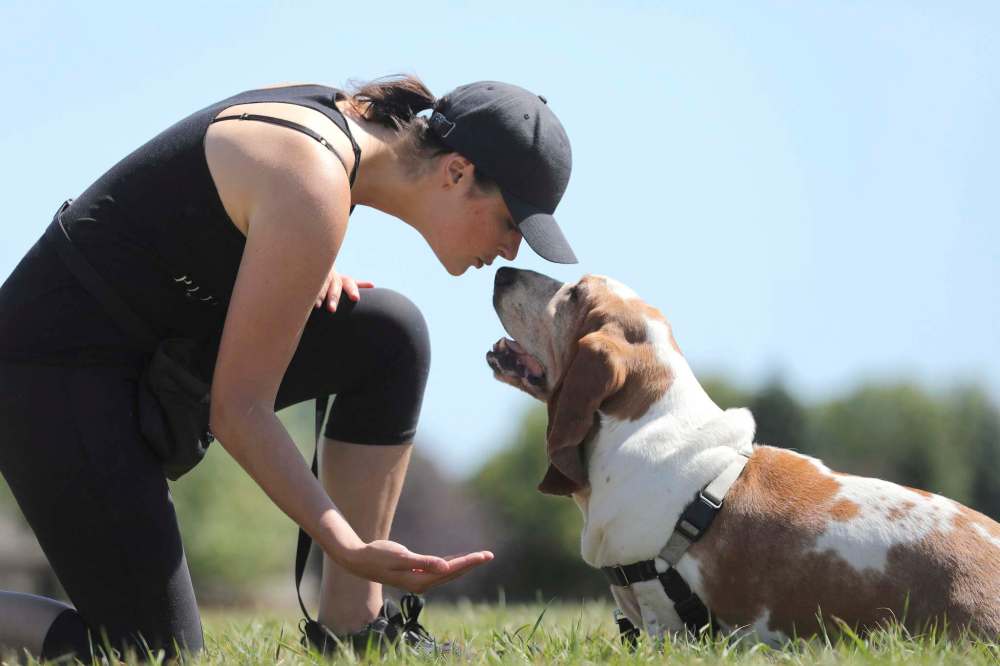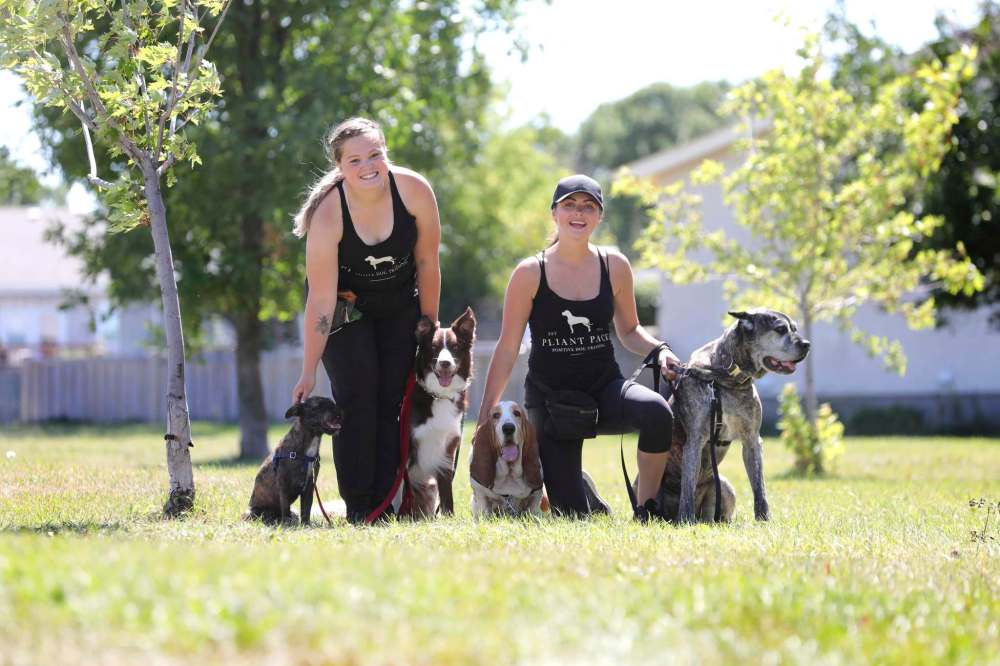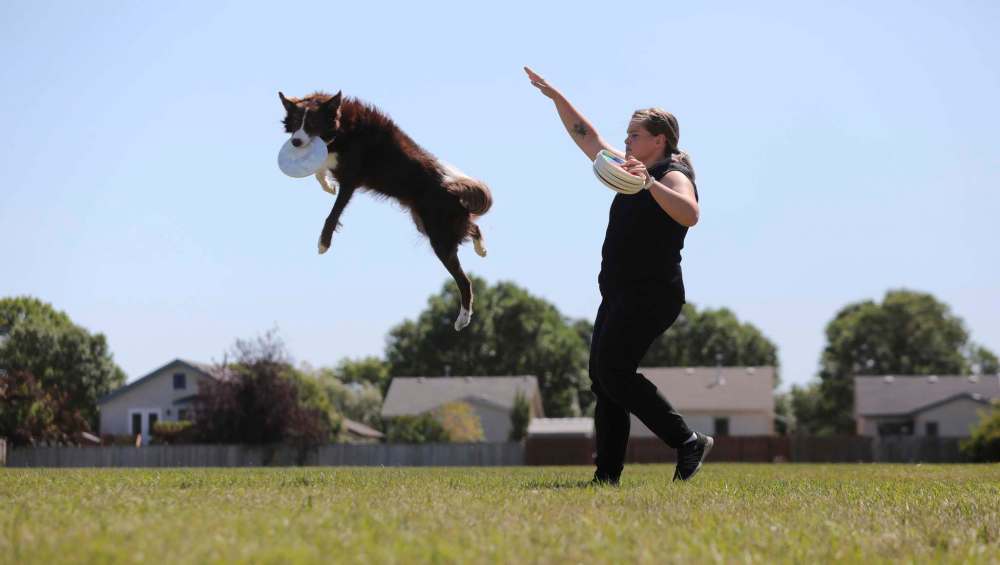The Pet project Bringing a new furry friend into your home takes planning and proper introductions
Read this article for free:
or
Already have an account? Log in here »
To continue reading, please subscribe:
Monthly Digital Subscription
$0 for the first 4 weeks*
- Enjoy unlimited reading on winnipegfreepress.com
- Read the E-Edition, our digital replica newspaper
- Access News Break, our award-winning app
- Play interactive puzzles
*No charge for 4 weeks then price increases to the regular rate of $19.00 plus GST every four weeks. Offer available to new and qualified returning subscribers only. Cancel any time.
Monthly Digital Subscription
$4.75/week*
- Enjoy unlimited reading on winnipegfreepress.com
- Read the E-Edition, our digital replica newspaper
- Access News Break, our award-winning app
- Play interactive puzzles
*Billed as $19 plus GST every four weeks. Cancel any time.
To continue reading, please subscribe:
Add Free Press access to your Brandon Sun subscription for only an additional
$1 for the first 4 weeks*
*Your next subscription payment will increase by $1.00 and you will be charged $16.99 plus GST for four weeks. After four weeks, your payment will increase to $23.99 plus GST every four weeks.
Read unlimited articles for free today:
or
Already have an account? Log in here »
Hey there, time traveller!
This article was published 12/08/2020 (1952 days ago), so information in it may no longer be current.
Bringing home a new pet is about more than just toe beans and tail wagging. Preparation, patience and training can get the relationship started on the right foot, er, paw.
At the Winnipeg Humane Society, interest has been high and adoption numbers have remained steady over last year, a significant feat considering the local rescue shelter has moved to an appointment-only system amid the pandemic.
While spending more time at home wallowing in existential dread might seem like the perfect opportunity to adopt a new pet, the same rules of engagement apply.

Before scrolling local animal listings, Daphne Hee, assistant manager of behaviour at WHS, recommends taking an honest look at your capacity to care for a pet.
“Dogs definitely require more time of the human, so if you’re adopting a dog, make sure you have time to bring them out for a walk or take them out for you know to dog park or play with them,” Hee says. “Cats require a more stable house. So if you know you are going to be moving soon, adding more family members or travelling a lot, a cat might not be a good option.”
Animal surrenders and returns are an unfortunate reality at the shelter — even among adopters with the best intentions. The WHS runs classes and a behaviour helpline for owners who are struggling, but getting prepared can take some of the edge off.
“Set up your home first, before you bring an animal home,” Hee says.
Creating a temporary seclusion area for cats, especially when there are other pets in the home, can make for a smoother transition. Hee recommends keeping a new cat in a separate room with food, water and litter for at least two weeks. First introductions between unfamiliar cats should be brief and done with a barrier, like a glass door or baby gate, if possible.
Dogs also need time to adjust.
Leesa Westwood and Emily Lowes are the co-owners of Pliant Pack Positive Dog Training.

“We’ll get emails like, ‘Oh boy, this dog is crazy… I made the wrong choice,’ and they’ve had the dog for 24 hours,” says Lowes. “Two weeks to four weeks, is when you’ll start to see the dog’s true colours.”
“We’ll get emails like, ‘Oh boy, this dog is crazy… I made the wrong choice,’ and they’ve had the dog for 24 hours. Two weeks to four weeks, is when you’ll start to see the dog’s true colours.”
– Emily Lowes
When bringing a new member into an existing pack, proper introductions are key. Westwood recommends avoiding head-on greetings and going for a walk in neutral territory away from the home.
“That way they have time to see each other and relax about the fact that there’s another dog around them,” she says.
Kennel training puppies and adult dogs can provide structure and safety when they’re left home alone. Start with small increments and positive reinforcement — never force a dog into their kennel and offer food and high value treats when they’re inside.
“It can be as simple as just setting the kennel up in a communal space, sitting down watching TV with your dog in the kennel and dropping the treats in every time that they’re quiet,” Lowes says.

Good socialization allows puppies to grow into confident, well-adjusted dogs.
“You can teach obedience at any age, socialization is the most important for the first year of their life,” Westwood says. “That would mean taking them to different places, meeting different types of dogs, meeting cats, meeting children, meeting men… and even walking in different neighbourhoods.”
She doesn’t recommend taking puppies to the dog park since their general excitement for life can come off as rude to other dogs.
Teaching an adult dog new tricks comes down to owner confidence. Many owners avoid situations that trigger fear or anxiety because they assume the animal was abused in the past, when, in fact, the behaviour might just be a lack of exposure.
“Say you get an adult dog, and you notice that they’re afraid of bikes, so then you start to avoid them and walk at really obscure hours. You’re not going to be doing your dog a favour,” Lowes says. “You’re creating these instances of really big fear and anxiety when they see a bike, once a month, whereas if they get used to it and it’s a daily occurrence, it’s not a big deal.”
When it comes to training tools, clickers offer a clear way to mark good behaviour and enrichment toys, like Kongs and treat toys, help dogs get excited about working for their food. Waist-worn treat pouches, while perhaps not fashionable, make it easy to reward good choices throughout the day.
In Winnipeg, dogs and cats are required to be licensed. Licenses are available through the city’s animal services department and annual fees start at $15 for cats and $40 for dogs.

Responsible pet ownership also means keeping furry friends healthy. Most animals receive core vaccinations for things such as rabies before adoption, but it’s up to owners to keep up with annual vaccines and regular vet visits.
eva.wasney@freepress.mb.ca
Twitter: @evawasney

Our newsroom depends on a growing audience of readers to power our journalism. If you are not a paid reader, please consider becoming a subscriber.
Our newsroom depends on its audience of readers to power our journalism. Thank you for your support.







